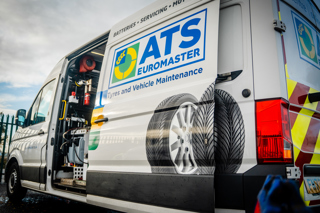More than a quarter of drivers had an illegal tyre on their vehicle at the time they were replaced, according to results from a survey conducted by TyreSafe in partnership with Highways England.
This could suggest that nearly 10 million tyres on the roads of England, Scotland and Wales could be dangerous and illegal.
TyreSafe is urging all drivers to check their vehicle’s tyres, making sure they are not adding a substantial and avoidable risk to both themselves and other road users.
The findings come from the most comprehensive survey across Britain’s tyre industry to date, which collated data on the tread depth of tyres when they are replaced. Data was supplied by 810 tyre retail outlets across England, Scotland and Wales, with nearly 102,000 tyres surveyed between February and May 2015.
With the legal minimum at 1.6mm, tread depth plays a decisive factor in braking and steering especially in the wet. Research has demonstrated that the braking distance from 50mph to standstill in wet conditions increases by more than the length of a full-sized shipping container (14m) when using worn tyres rather than new ones, which dramatically raises the chances of a collision.
“TyreSafe does not believe millions of drivers are intentionally putting others at risk - it is more a question of educating motorists to take responsibility for their safety and that of others on the road,” said Stuart Jackson, TyreSafe chairman.
“As vehicles have become increasingly reliable, owners have become less used to performing what were once considered basic precautionary checks before setting off on a journey. Tyres too are much more technologically advanced but they do wear and can get damaged so it is down to the driver to regularly check they’re safe”
“The evidence provided by the TyreSafe survey underlines what we already feared - awareness among Britain’s motorists’ of the importance of tyre safety urgently needs to improve.”
TyreSafe believes many more millions of motorists are avoiding having illegal tyres on their vehicles more by luck than judgement. In addition to over a quarter of replaced tyres being illegal, more than a third of all tyres surveyed were extremely close to the legal limit with a maximum of 0.4mm of tread depth remaining before becoming illegal – about half the thickness of a bank card.
That thickness can only be measured using an accurate tread depth gauge, but previous research shows very few drivers are actually carrying out routine tyre checks of any sort.



















Login to comment
Comments
No comments have been made yet.